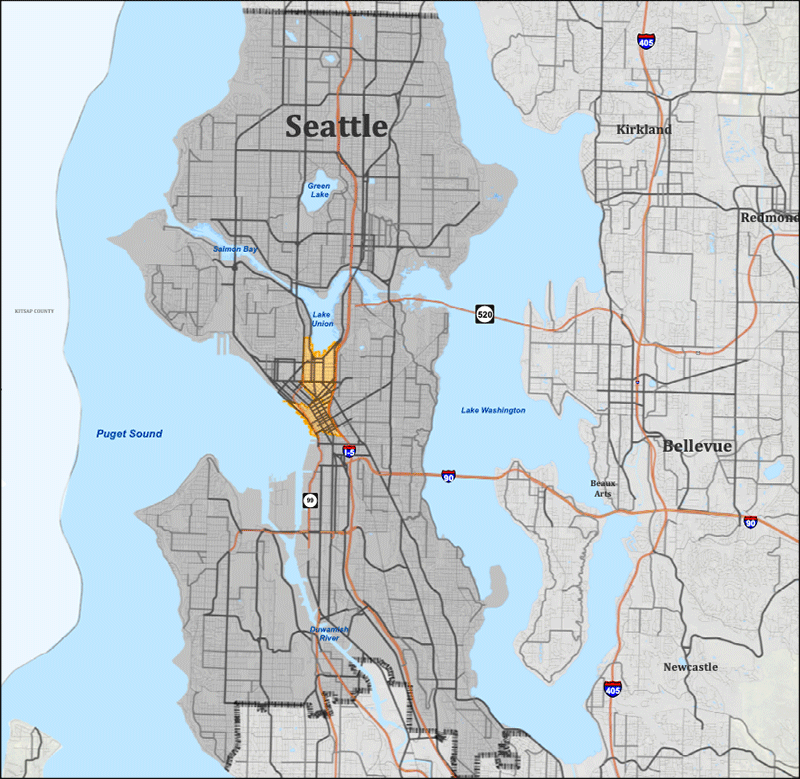S. Lake Union, Denny Triangle & Commercial Core
Overview
In 2013, King County and the City of Seattle entered into an interlocal agreement for the implementation of a regional program to transfer development rights from King County farm, forest, and rural residential land to the South Lake Union, Denny Triangle, and Commercial Core in the City of Seattle. While establishing a marketplace for TDR credits, this agreement will protect and maintain the existing character of rural, farm, and forest lands, in turn directing growth into the region’s largest designated urban center. Regional TDR credits can be used to increase development capacity in these specific areas of the City of Seattle. Preference is given to TDR credits from farmlands and regional TDR credits from which the proceeds from sale will be directly used to purchase agricultural land that supports the local food system and the availability of fresh and healthy produce. In exchange for the city accepting more than 800 TDRs, King County agreed to share a portion of its future property tax revenue from new construction within the receiving areas with the City of Seattle for use in creating infrastructure and amenities.
Seattle TDR Receiving Area
Using rural TDR credits in Seattle
The City of Seattle has approved the use of TDRs in the South Lake Union, Denny Triangle, and Commercial Core areas, as shown in the map. TDRs must originate from agricultural, forest, and rural zoned sending sites, including sending sites that are part of King County’s TDR Bank. The City of Seattle allows development projects within specified receiving areas to increase residential and non-residential square footage beyond the base zoning.
TDR credits may be used to increase commercial capacity and residential density as identified below.
South Lake Union
Projects in South Lake Union over 85 feet must purchase additional height/density square footage. The percentage of additional height/density square footage that must be purchased through TDR is listed below. The remaining percentage must be obtained through developer payment to the city for affordable housing.
| Project Type | Additional height/density above base through TDR |
|---|---|
| Residential | 40% |
| Commercial | 25% |
Denny Triangle & Commercial Core
Projects in Denny Triangle and Commercial Core areas may increase Floor Area Ratio (FAR) above base. The amount of bonus FAR obtained with TDR is listed below.
| Zone | Base FAR | Max FAR | Bonus FAR obtained w/ Regional TDR |
|---|---|---|---|
| Downtown Office Core 1 (DOC1) | 6 | 20 | 1 |
| Downtown Office Core 2 (DOC2) | 5 | 14 | 0.75 |
| DMC 340/290-400 | 5 | 10 | 0.5 |
| DMC 125, DMC 160, DMC 240/290-400 | 5 | 7 | 0.25 |
TDR credit exchange ratios
The exchange ratios for square feet per TDR credit are identified in the tables below.
Residential Regional DR Credit Exchange Ratios
| Type of Credit | Square Feet per Credit |
|---|---|
| Agricultural credit | 1.640 |
| Forest or Rural credit, provided the entire proceeds from the sale shall be used to purchase new agricultural credits | 1,500 |
Nonresidential Regional DR Credit Exchange Ratios
| Type of Credit | Square Feet per Credit |
|---|---|
| Agricultural credit | 1,120 |
| Forest or Rural credit, provided the entire proceeds from the sale shall be used to purchase new agricultural credits | 1,030 |

 Translate
Translate
